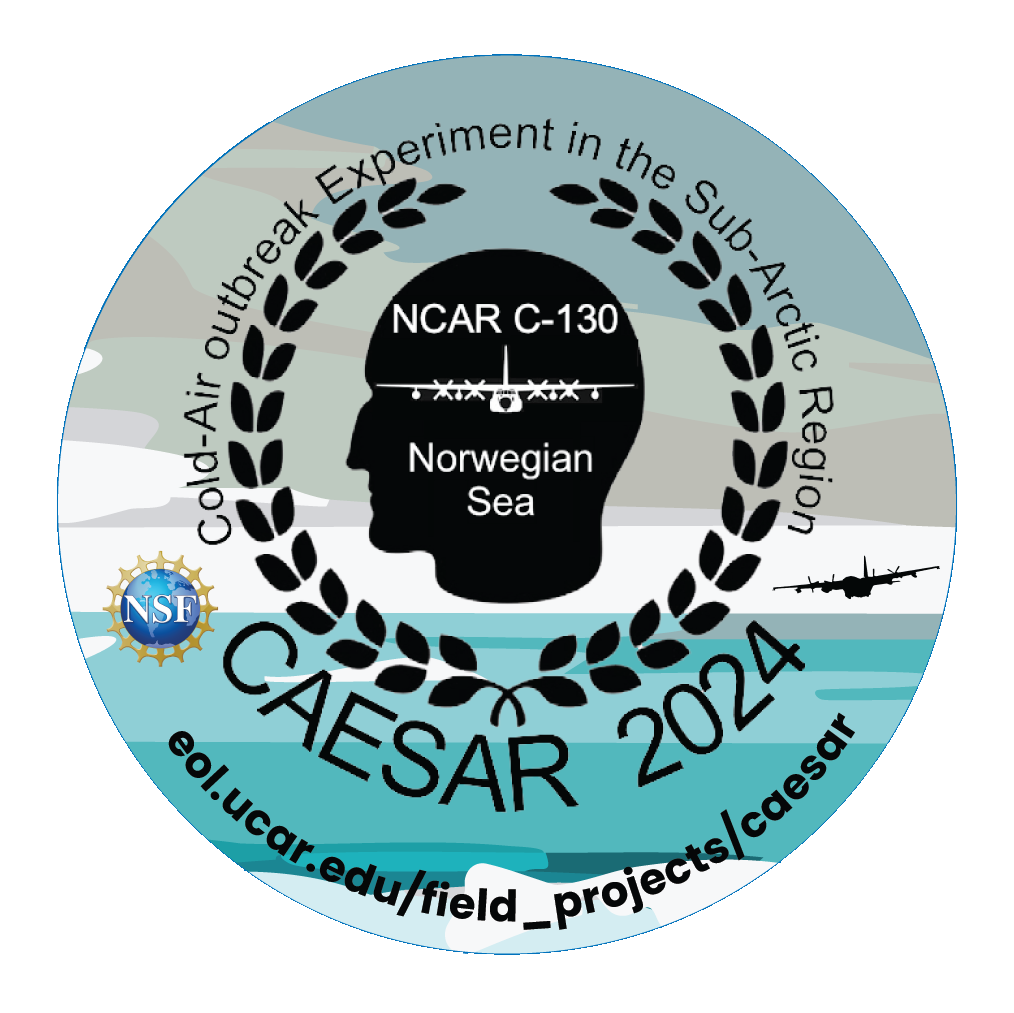CAESAR

 Sometimes cold air moves from the poles towards the equator as part of the global circulation of air around our Earth. This is called a cold-air outbreak (CAO) and they are common in mid-to high latitudes during winter. The cold air, when moving over open water, forms unique clouds, and can result in heavy snowfall and strong winds. CAOs remain a mystery because of the many natural processes involved in their creation.
Sometimes cold air moves from the poles towards the equator as part of the global circulation of air around our Earth. This is called a cold-air outbreak (CAO) and they are common in mid-to high latitudes during winter. The cold air, when moving over open water, forms unique clouds, and can result in heavy snowfall and strong winds. CAOs remain a mystery because of the many natural processes involved in their creation.
CAESAR was an international field campaign to study the structure of marine boundary layer clouds during CAOs in the Sub-Arctic Region. This region is experiencing drastic effects of global warming and sea ice loss, and yet, the connection between high- and mid-latitudes and their effect on global climate is not well understood. CAESAR deployed from Kiruna, Sweden and reached the Arctic sea ice edge using the NSF/NCAR C-130 to track the evolution of the cloudy boundary layer using state-of-the-art instrumentation.
Paquita Zuidema
Paquita Zuidema is a Professor and Chair of the Department of Atmospheric Sciences at the University of Miami’s Rosenstiel School of Marine, Atmospheric, and Earth Science. Her research focuses on the relationship of warm, shallow clouds to the large-scale environment, with an emphasis on the connection to radiation. For CAESAR, Paquita studied the what, how, and why of cloud partitioning into liquid and ice as clouds move southward from the Arctic Sea-Ice edge.
Bart Geerts
Bart Geerts and his graduate students conduct research into cloud-scale to mesoscale atmospheric processes, mainly using aircraft measurements and a variety of radars, especially the vertically profiling airborne Wyoming Cloud Radar. For CAESAR, Bart focused on the relation between surface fluxes, cloud and precipitation processes, and cloud morphology.
Greg McFarquhar
Greg McFarquhar is a professor at the University of Oklahoma specializing in cloud physics. He also serves as Director of the Cooperative Institute for Mesoscale Meteorological Studies (CIMMS). On CAESAR, Greg investigated how cloud microphysical and macrophysical properties depend on environmental and aerosol conditions.
The Science of CAESAR 
CAESAR: Life on an Arctic Field Project 
The CAESAR Team
Team Members Featured in the Documentary Films |
|
|---|---|
| Team Member | Affiliation During CAESAR |
| Paquita Zuidema, Lead Scientist | University of Miami |
| Greg McFarquhar, Lead Scientist | University of Oklahoma |
| Bart Geerts, Lead Scientist | University of Wyoming |
| Sarah Woods | NSF NCAR |
| Janine Aquino | NSF NCAR |
| Elise Rosky | University of Michigan |
| Nick Amundsen | University of Oklahoma |
| Qing Niu | University of Oklahoma |
| Stephen Jude | NSF NCAR |
| Edward Proulx | NSF NCAR |
| Jo Ragland | SUNY Oswego |
| Adriana Raudzens Bailey | University of Michigan |
| Ezekiel Caldon | SUNY Oswego |
| Emma Järvinen | Karlsruhe Institute of Technology |
| Michael Tjernström | Stockholm University |
| Sam Ephraim | University of Miami |
| Jeff Snider | University of Wyoming |
| Yonggang Wang | SUNY Oswego |
| Sarah Gryskewicz | SUNY Oswego |
| Bee Lamsma | SUNY Oswego |